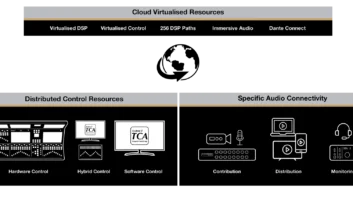As an industry, we talk a lot about ‘business continuity’ or ‘disaster recovery’. But what we actually mean is ‘revenue protection’.
If you are a broadcaster and cannot transmit the commercials you’re contracted to transmit, you cannot invoice for them, and you’ve lost money. For a mid-market station, you might expect to bill around $10,000 dollars for a single commercial break in general programming. Going off air for a break during a live weekend football game might cost $400k or more in lost advertising revenue. This is likely to be a seven-figure sum for a 30-second spot in a major sport event. Can you afford to risk that loss of income?
Outages also affect brand value. You work to ensure a premium viewing experience for your viewers, because going off-air negatively impacts your brand. This has the potential to impact your ratings and market share, as audiences switch to more reliable competitor channels.
Threats to revenue can come from anywhere, and we’re tracking more every day. Natural disasters, human error and now pandemics are all legitimate threats to the bottom line. A new and growing risk now comes in the form of cybercrime. According to Cybersecurity Ventures, global cybercrime costs are set to reach $10.5 trillion a year by 2025. Cybercrooks attack any size business, large or small.
Researcher Sophos says that the average ransomware attack costs the victim $1.85 million. And even if you pay the ransom, typically you typically see only two-thirds of your data restored.
Can your business sustain a seven-figure loss through cybercrime? Very few could. So, along with all the other threats to your business driving us towards increasingly decentralised, remote working architectures, protection against cybercrime must be at the top of the list. It is vital to build the tightest security into everything you do, and the cloud can play a pivotal and practical role in doing just this.
Availability in the cloud
Broadcast engineers have been brought up with on-premises, hardware solutions. They know from experience and knowledge how to deploy and architect this hardware to achieve the reliability and touchpoint-level control they want. More so, because these legacy systems are isolated both physically and connectedly, content and control security is easy to impose.
It is important to understand, first and foremost, that business continuity in the cloud provides the scrutinising levels of security you demand. With the right supplier, the cloud delivers the necessary reliability, resilience and security to meet your revenue protection needs.
Let’s talk about playout. For premium channels at least, broadcasters expect very high availability. A channel that is off air is not making money. Engineers have always seen “five nines” – 99.999 per cent up time – as a minimum requirement. That sounds like very high availability, but arithmetic tells us that 0.001 per cent equates to about five and a quarter minutes of dead air a year; potentially an entire lost break and more.

A cloud provider’s entire business model is to deliver computing services for its clients the instant it’s needed. In broadcast terms this means unimagined availability; maybe nine nines, or a fraction of a second of downtime a year, assuming, of course, that you have designed a robust solution. And this high availability also comes with value-add features. Routine maintenance, upgrades and replacements are someone else’s job! Someone entirely focused on those tasks.
A broadcaster never needs to check the SMART status of disk drives in servers, or clean the air conditioning, or manage load transfers to allow for software upgrades. The cloud provider will also handle business continuity with geographically diverse server farms, each with multiple power feeds.
Just as broadcasters can leverage the cloud’s effectively infinite scalability to spin up pop-up channels for special events, it can also be used to spin up a disaster recovery channel. The channel remains cost-effectively dormant – not consuming resources – waiting to be initialised should a crisis arise.
The cloud is also an ideal environment for remote working. Indeed, every connection is a remote connection, even if it is in your machine room, because the storage and processing are somewhere else. Given a reasonable internet connection, your master control operator could be anywhere in the world and still have exactly the same capabilities, response and user experience as if they were on site. A channel controller can monitor and manage playout from home as easily as from the network operations center (NOC).
Despite the common misconception, this also applies to live channels. All the playout requirements – including the unpredictable interventions associated with fitting commercial breaks into live sports programming – can be hosted in the cloud, with operators sitting wherever it’s convenient and safe.
Outsourcing security
Just as it is the cloud provider’s business to ensure very high availability without intervention from the client, so too is security. With cyberattacks now an all too familiar headline, no broadcaster wants to risk the output due to incursions and ransom demands leading to loss of revenue and brand reputation, as well as the direct and indirect costs of mitigating the attack and the potential loss of critical assets.
This is all part of the broadening of scope in broadcast business continuity and revenue protection. We used to think a disaster recovery system was there in case of fire or flood. Now we have to add to the list pandemics keeping staff at home and cyberattacks robbing you of control of your own assets.
Building your own data security team means recruiting and managing a whole new category of workforce. That is a business and financial overhead you do not need.
But this is part of the core offering of a cloud provider: no business, in any sector, should trust their data and processing if they can’t be sure it’s completely secure. Big cloud providers have a win-win: they can afford to put together the best possible team, and software security experts will want to work for a big cloud provider because that is where the challenges are.
Moving to the cloud requires investment and careful decision-making on the part of the broadcaster. Relying on the right technology partners will help. But get your architecture right and the cloud will deliver processing power and storage that always flexes to your demands, gives you unimagined reliability, and provides data security that’s even good enough for the US Secret Service. As we move to decentralised platforms and remote access, the cloud can comfortably provide the level of service the media industry expects.







